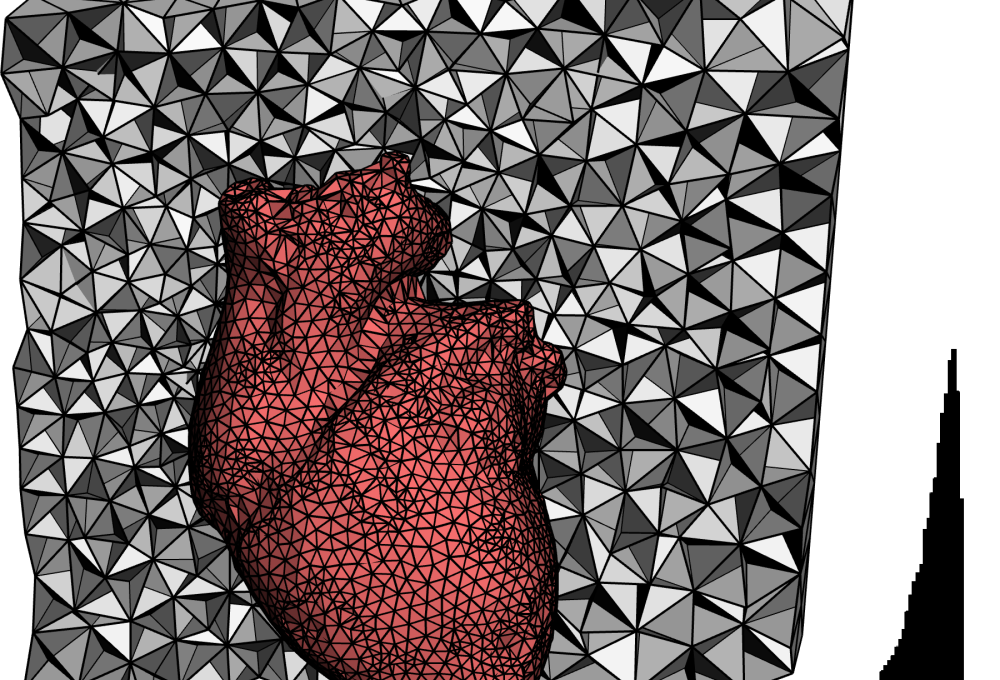Purpose and context
We propose a novel approach for generating tetrahedral meshes
 |
 |
 |
 |
| (a) | (b) | (c) | (d) |
Figure 1 : 2D example of our meshing approach : (a) initial image. (b) : Medial Axis approximation. (c) Clustering. (d) Resulting mesh
Methods
We propose a novel tetrahedral mesh generation approach with adapted sampling. Our algorithm works directly on the voxels of the input volumes coming from segmented Tomographic Scanners or MRI (illustrated by Fig. 1). No polygonal input surface is needed. The first step is a clustering of the input data (pixels or voxels) into n cells, approximating a Centroidal Voronoi Diagram. Each cell is given a site. Such a clustering takes into account a density function ρ(x) and a set of constraints to preserve the boundaries between the objects inside the domain by constraining the sites zi nearby the objects boundaries.
The second step consists in triangulating the sites, using the dual of the generated clustering. Finally, each constructed tetrahedron is associated to an object Oi , and we apply a cleaning step to increase the quality of the tetrahedron and to enhance the interface between the different objects. Figure 1 shows the main steps in our algorithm on a 2D example; the input image is shown in (a). We compute the medial axis of the shape using
Results
Here are some tetrahedral meshes generated from medical data with our approach :
 |
 |
 |
|
Acknowledgements
This work was performed in collaboration with the Ampère Lab within the ANR BrioRfMod French project.

